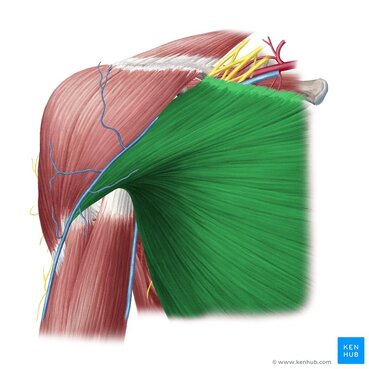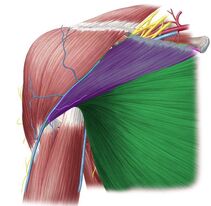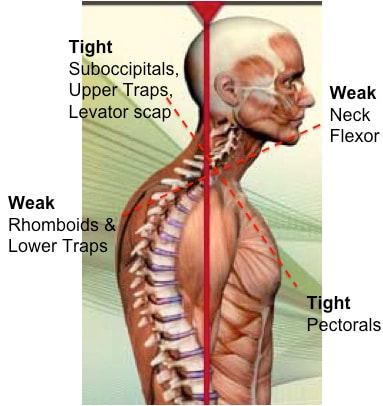|
The next few episodes of Muscle Monday will be dedicated to discussing important muscles related to Posture. Questions about posture are probably one of the top things people ask me about on a regular basis, and the answer is not as simple as it seems. Posture involves many components which need to work together just-so in order to create the ideal scenario for your body to function at its best. Today, we will be talking about the might Pectoralis Major. To say that this muscle is important would be redundant, because (almost) ALL muscles have a specific function, but this one in particular often gets a bad rep because it is associated with poor posture. In reality, it is an extremely versatile muscle that is used in most shoulder movements. Let's explore some fun facts about this muscle Fact #2: The pec major can affect both the glenohumeral (shoulder) joint and the the scapula Due to its attachment on the clavicle, when the two portions of the pec major work together, they can depress the shoulder girdle Fact #3: The pec major performs movements in 5 planes of shoulder motion Because the muscle has two portions, the orientation of the muscle fibers allow it to move your shoulder in several planes of motion. The clavicular fibers assist with shoulder flexion while the sternal fibers assist with shoulder abduction AND extension. When the two portions work together, they will perform shoulder horizontal adduction, as well as shoulder (glenohumeral joint) internal rotation. Fact #4: Constantly sitting in a "slouched posture" will result in your pec major to get tight
Fact #5: In order to adequately take care of your body, you must do a combination of strengthening and stretching. It's all about balance. First of all, try and think about what positions you are in the most frequently and take the time to stretch in the opposite directions, no matter what that may be. Because most of us these days spend a lot of time sitting in front of a computer, on the couch or looking at our phones (or a combination of all 3?), you must make an effort to make sure that the muscle doesn't get too tight. Conversely, if you perform a task that requires a lot of pec use - such as playing a bowed instrument (Right arm), playing tennis, etc., you may want to invest a portion of your exercise routine to working on building strength, as it is also a key player in your overall shoulder stability. Take some time and check out this stretch to help improve your shoulder's powerhouse. Next week, we will be discussing the Pec Major's little brother, the Pec Minor. You're not going to want to miss it.
Until next time, stay happy and healthy! 5/2/2021 12:58:18 am
Hello,
Reply
Leave a Reply. |
AuthorDr. Janice Ying is a Los Angeles-based Physical Therapist. She is board-certified Orthopedic Physical Therapy Specialist and is regarded as a leading expert in the field of Performing Arts Medicine and the development of cutting edge injury prevention and rehabilitation programs for musicians. DisclaimerThe information on this website is intended for educational purposes and should NOT be construed as medical advice. If you have or think you have a health-related issue which needs to be addressed, please seek the help from your local licensed medical professional.
Archives
October 2020
Categories
All
|
We would love to see you soon!
|
© Opus Physical Therapy and Performance - 2021 - All Rights Reserved




 RSS Feed
RSS Feed